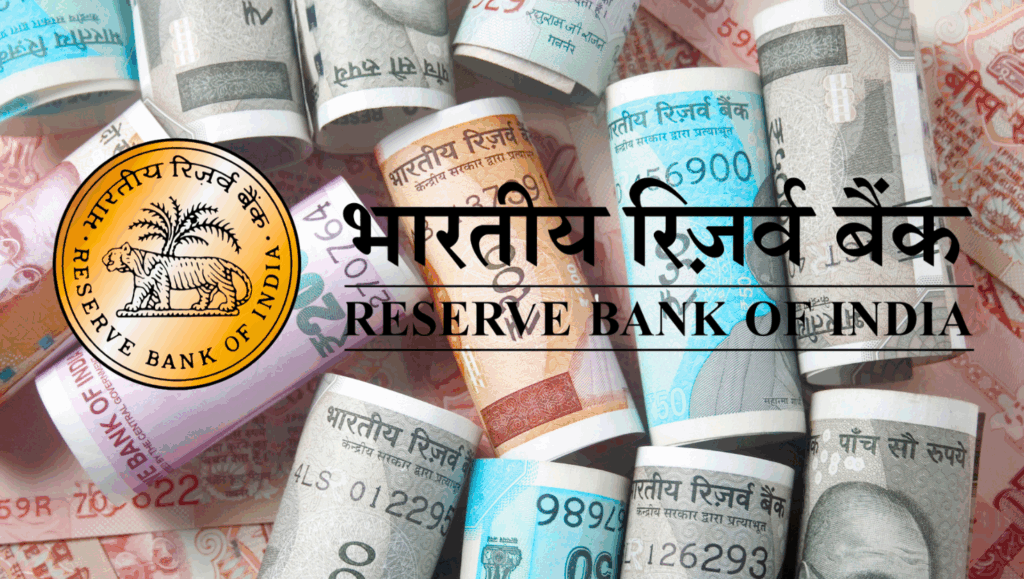
“The differences between Tier 1 and Tier 2 NPS accounts, their tax benefits, withdrawal rules, and investment options. Learn how the National Pension System can secure your retirement with high returns and flexibility. Start planning your financial future today with this comprehensive guide to NPS accounts!”
The National Pension System (NPS) is a government-backed retirement savings scheme designed to provide financial security to Indian citizens during their retirement years. It is a voluntary, long-term investment plan that offers attractive returns and tax benefits. One of the key features of the NPS is its two-tier account structure: Tier 1 and Tier 2 NPS accounts. Understanding the differences between these two accounts is crucial for making informed decisions about your retirement planning.
What is the National Pension System (NPS)?
The National Pension System (NPS) is a government-sponsored pension scheme in India, designed to provide retirement income to all citizens. It was initially launched for government employees in 2004 and later extended to all citizens in 2009. NPS offers two types of accounts: Tier 1 and Tier 2.
It is regulated by the Pension Fund Regulatory and Development Authority (PFRDA) and is available to all Indian citizens aged between 18 and 70 years. The NPS is designed to provide a regular income post-retirement by allowing individuals to contribute regularly during their working years.
The NPS is a market-linked investment scheme, meaning the returns are based on the performance of the underlying assets. Subscribers can choose from various asset classes, including equity, corporate bonds, government securities, and alternative assets, to build their retirement corpus.
Investment Options and Returns
NPS offers various investment options, allowing subscribers to choose based on their risk appetite and investment goals. The options include:
- Equity (E): Investments in equity markets.
- Corporate Bonds (C): Investments in corporate debt securities.
- Government Bonds (G): Investments in government securities.
- Alternative Investment Funds (A): Investments in alternative assets.
Subscribers can choose between two investment approaches:
- Active Choice: Subscribers decide the asset allocation.
- Auto Choice: The asset allocation is determined based on the subscriber’s age.
What is a Tier 1 NPS Account?
The Tier 1 NPS account is the primary retirement account under the NPS. It is a mandatory account for all NPS subscribers and is designed specifically for long-term retirement savings. Here are the key features and benefits of a Tier 1 NPS account:
Features
A Tier 1 NPS account is the primary account under the NPS scheme. It is mandatory for anyone who wants to join the NPS. The key features of a Tier 1 account include:
- Long-term Investment: The account is designed for long-term retirement savings and has a lock-in period until the subscriber reaches the age of 60.
- Minimum Contribution: The minimum contribution to open a Tier 1 account is ₹500, and the minimum annual contribution is ₹1,000.
- Tax Benefits: Contributions to Tier 1 accounts are eligible for tax deductions under Section 80C and Section 80CCD(1B) of the Income Tax Act.
- Partial Withdrawals: Partial withdrawals are allowed under specific conditions such as higher education, marriage, purchase of a house, or medical treatment.
- Annuity Purchase: Upon reaching the age of 60, the subscriber must use at least 40% of the corpus to purchase an annuity, while the remaining 60% can be withdrawn as a lump sum.
Eligibility
- Any Indian citizen between the ages of 18 and 70 can open a Tier 1 NPS account.
- The subscriber must complete the Know Your Customer (KYC) process.
Tax Benefits
- Section 80C: Contributions up to ₹1.5 lakh are eligible for tax deduction.
- Section 80CCD(1B): An additional deduction of ₹50,000 is available for contributions to NPS.
- Tax-Free Withdrawals: Up to 60% of the corpus withdrawn at maturity is tax-free.
Withdrawal Rules
- Before 60 Years: Partial withdrawals are allowed after three years of account opening, subject to specific conditions.
- At 60 Years: Up to 60% of the corpus can be withdrawn tax-free, and the remaining 40% must be used to purchase an annuity.
What is a Tier 2 NPS Account?
The Tier 2 NPS account is a voluntary savings account that complements the Tier 1 account. It offers greater liquidity and flexibility, making it suitable for short-term financial goals. Here are the key features and benefits of a Tier 2 NPS account:
Key Features:
A Tier 2 NPS account is a voluntary savings account that offers greater flexibility compared to a Tier 1 account. The key features include:
- Voluntary Account: Unlike the Tier 1 account, the Tier 2 account is optional and can be opened only if you already have a Tier 1 account.
- No Lock-in Period: Funds in the Tier 2 account can be withdrawn at any time, making it a flexible investment option.
- Minimum Contribution: A minimum of ₹250 is required per contribution, and the account must maintain a minimum balance of ₹2,000 at the end of each financial year.
- Investment Options: Similar to the Tier 1 account, subscribers can choose between active and auto investment options.
- No Annuity Requirement: Unlike the Tier 1 account, there is no requirement to purchase an annuity with the Tier 2 corpus.
Eligibility
- Only individuals with an active Tier 1 account can open a Tier 2 account.
- The subscriber must be an Indian citizen between the ages of 18 and 70.
Tax Benefits
- Government Employees: Contributions to Tier 2 accounts by government employees are eligible for tax deduction under Section 80C, provided there is a lock-in period of three years.
- Others: No tax benefits are available for non-government employees.
Withdrawal Rules
- Flexible Withdrawals: Subscribers can withdraw funds from Tier 2 accounts at any time without any penalties.
Key Differences Between Tier 1 and Tier 2 NPS Accounts
| Feature | Tier 1 NPS Account | Tier 2 NPS Account |
| Nature | Mandatory | Voluntary |
| Lock-in Period | Until retirement (age 60) | No lock-in period |
| Withdrawals | Restricted (only under specific conditions like medical emergencies, education, etc.) | Anytime |
| Minimum Contribution | ₹1,000 per year | ₹250 per contribution |
| Tax Benefits | Eligible under Section 80C (up to ₹1.5 lakh) and Section 80CCD(1B) (additional ₹50,000) | Limited tax benefits (only for government employees under Section 80C) |
| Annuity Requirement | 40% of corpus must be used to purchase an annuity at retirement | No annuity requirement |
| Purpose | Long-term retirement savings | Short-term savings and liquidity |
| Account Activation | Primary account, mandatory for NPS | Can only be opened if Tier 1 account exists |
| Liquidity | Low (funds locked until retirement) | High (withdrawals allowed anytime) |
| Investment Flexibility | Choice between Active and Auto options | Similar investment options as Tier 1 |
This table format clearly highlights the key differences between Tier 1 and Tier 2 NPS accounts, making it easy for readers to compare and understand their unique features.
How to Open an NPS Account
Opening an NPS account is a simple and straightforward process. Here’s a step-by-step guide:
- Choose a Point of Presence (PoP): Visit an authorized PoP or use the online platform provided by the NPS Trust.
- Fill the Application Form: Provide your personal details, including your PAN, Aadhaar, and bank account information.
- Submit KYC Documents: Submit the required documents for identity and address verification.
- Make the Initial Contribution: Pay the minimum contribution to activate your account.
- Receive PRAN: Once your account is opened, you will receive a Permanent Retirement Account Number (PRAN).
Latest Updates and Trends in NPS
As of 2023, the NPS has gained significant traction among Indian investors due to its attractive returns and tax benefits. Here are some of the latest trends and updates:
- Increasing Subscriber Base: The NPS subscriber base has crossed 6 crore (60 million) as of 2023, reflecting its growing popularity.
- Higher Returns: Over the past decade, the NPS has delivered an average annual return of 9-12%, outperforming many traditional investment options.
- Digital Onboarding: The PFRDA has introduced online platforms and mobile apps to make it easier for subscribers to open and manage their NPS accounts.
- New Investment Options: The PFRDA has expanded the range of investment options, including alternative assets like real estate and infrastructure funds.
Final Thought
The National Pension System (NPS) is a powerful tool for building a secure financial future. By understanding the differences between Tier 1 and Tier 2 NPS accounts, you can make informed decisions about your retirement planning. While the Tier 1 account is ideal for long-term retirement savings, the Tier 2 account offers flexibility and liquidity for short-term goals.
With its attractive returns, tax benefits, and low-cost structure, the NPS is a must-consider option for anyone looking to secure their financial future. Start your NPS journey today and take the first step toward a stress-free retirement.
Frequently Asked Questions
Q1. Can I have both Tier 1 and Tier 2 NPS accounts?
Yes, you can have both Tier 1 and Tier 2 accounts. However, you must open a Tier 1 account before opening a Tier 2 account.
Q2. What happens to my NPS account if I change jobs?
Your NPS account remains active regardless of your employment status. You can continue contributing to your account as a self-employed individual.
Q3. Can I withdraw my entire NPS corpus at retirement?
No, only 60% of the corpus can be withdrawn as a lump sum. The remaining 40% must be used to purchase an annuity.
Q4. Is the NPS suitable for young investors?
Yes, the NPS is an excellent option for young investors due to its long-term growth potential and tax benefits.
-

Indian Stock Market Trends: PSU Banks Outshine Amid $18B FII Exit Chaos December 18, 2025
-

Axis Bank and Google Pay Redefine Payments: India’s First Fully Digital UPI Credit Card Revolution
-

RBI Opens Applications for 93 Specialist Officer Roles: Your Gateway to a Prestigious Career






























